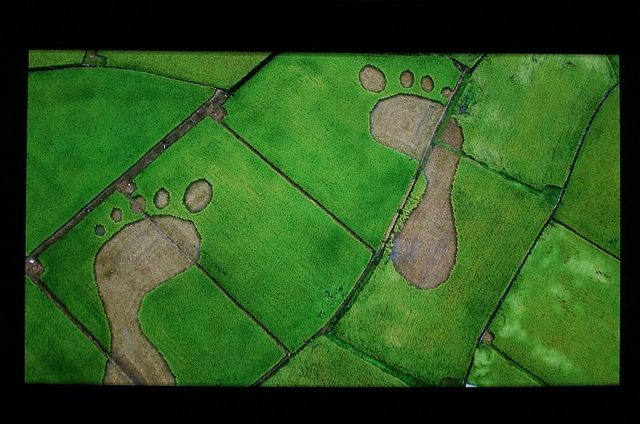Learn from Chi Bo Lin’s view
To love it, one needs to see the beauty of it, as well as its problems, only then can one pray for Taiwan’s future from the heart.
— Chi Po-lin
Chi Po-lin‘s documentary film “Beyond Beauty: Taiwan from Above (看見台灣)“ captures Taiwan completely in aerial cinematography and broke the Taiwan box office records for the largest opening weekend and the highest total gross of a locally produced documentary. It brings a complete different perspective of understanding the beauty of the land as well as raises awareness of environmental issues which later prompted calls on the government to amend laws and repeal Asia Cement’s mining license.
Beyond Beauty: Taiwan from Above official trailer
During the press conference of sequel to “Beyond Beauty: Taiwan from Above”, one asked Chi why he did not use drones. He pointed out it is due to the poor image quality and the monotone of the camera movement that he did not consider to make film by drones.
On June 10, 2017, Chi died in a helicopter crash in a mountainous area in Hualien County’s when the group was shooting footage for the sequel. Since using helicopters for aerial cinematography put photographer in tremendous danger, using drones with the aid of artificial intelligence might be worth a try.
We decided to start this project: learning from Chi’s view and shooting the documentary by AI.

The helicopter crashed in a mountainous area in Hualien County’s when Chi’s group was shooting footage for the sequel
Camera angle is one of the most important factor in producing scenic view. Where the camera is placed in relation to the subject and how the angle is taken can affect the way the viewer perceives the subject and invoke feelings and emotions.
Chi’s film uses different camera angles to achieve landscape videography, in which the majority of them is bird’s-eye view. It constitutes 71 precent of the angles that taking shoots of subjects such as coastlines, paddy fields and cities. This shot gives the audience a wider view and creates a spatial perspective that is rare for human’s viewpoints where objects or human seems harmless and insignificant.
The other part of the documentary consist of both high-angle views and eye-level views. High-angle views are taken when the camera is placed above the subject and lens points down while eye-level views are when the camera is looking straight on with the subject.

Composition of camera angles of “Beyond Beauty: Taiwan from Above”
Let’s look at the basic camera moves that are used in Chi’s film as well. Two main techniques used are dollying and orbiting, constitute to 31 and 26 percent, respectively. In these techniques, the camera on the helicopter flies along an object, often coastlines or field roads, and move slowly up, down or side-to-side. Sometimes the camera orbits around an object such as lighthouses or mountain tips.

Composition of camera movements of “Beyond Beauty: Taiwan from Above”
Other moves including tracking shots, pan, tilts and zoom are also applied in the film. We analyze these techniques and usages to understand how a videographer captures the beauty of our lands. These provide our system with the camera strategies and styles to create AI-powered observational documentaries.
We have started collaborations with Tainan City Government, Department of Aeronautics and Astronautics from National Cheng Kung University and GEOSAT Aerospace & Technology Inc to enable AI to shoot a documentary, and learning from “Beyond Beauty: Taiwan from Above” is just the start of it.
Feautured Photo by 總統府 / CC BY


